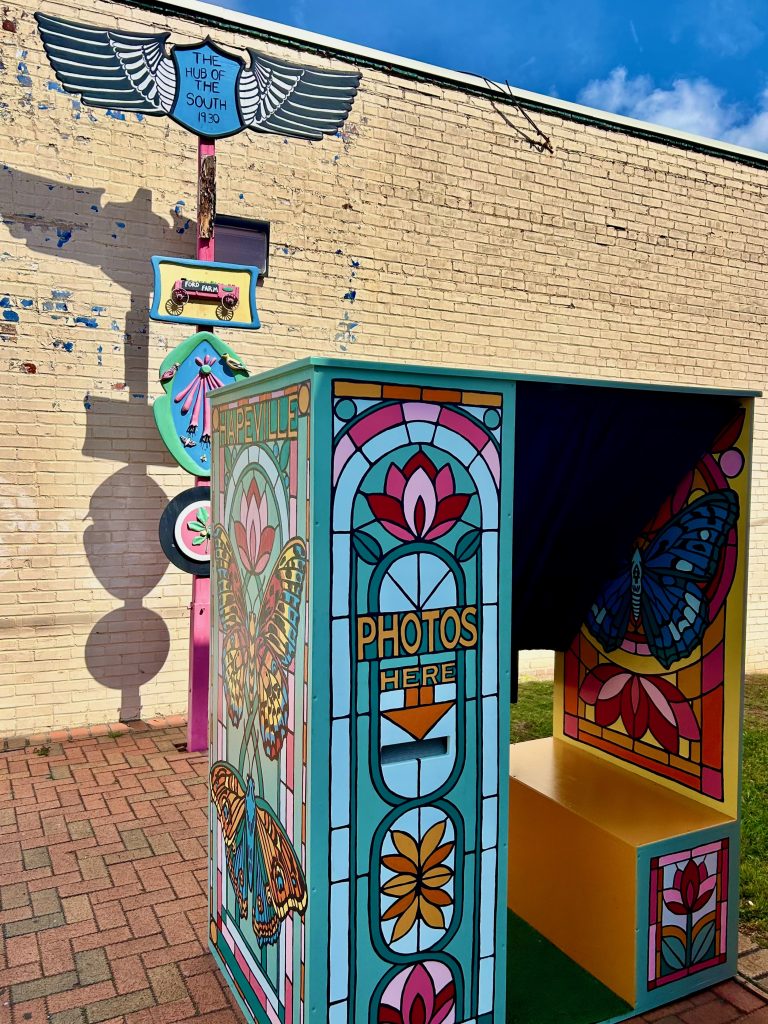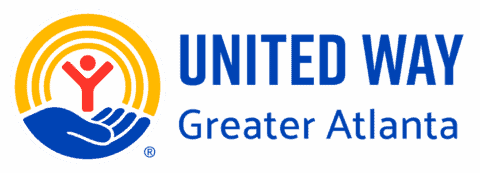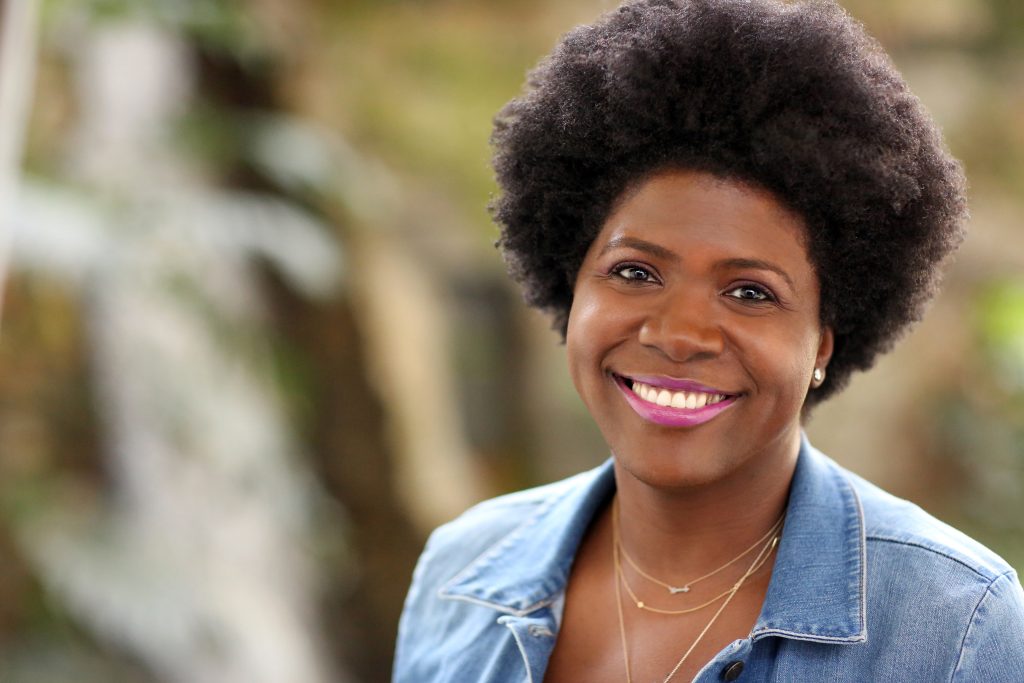As Eboné Smiley walked down Hapeville’s Central Avenue, she looked past the railroads and manufacturing infrastructure to point out its beauty. It’s walkable, full of murals, little free libraries, posters of upcoming events, local businesses, and even a photobooth. Painted butterflies dot the sidewalks — a public art initiative representing transformation and renewal. She may not have noticed these details before her journalism fellowship, but now, telling the stories of the streets where she lives is her job.
“The Tri-Cities area is full of culture, full of arts, and I don’t think people know. And they need to!” Eboné said.
United Way of Greater Atlanta partners with Canopy Atlanta, a community journalism nonprofit, to train and pay local residents like Eboné around the Greater Atlanta region. Each issue published focuses in depth on a neighborhood, with opportunities for the journalists to continue to work with Canopy and freelance even after the program ends.
“The end goal is for communities to be able to better advocate for themselves—to build the communities that they want to see, and that they want to live in,” said Mariann Martin, Editorial and Operations Director of Canopy Atlanta.
Eboné moved to East Point, one of the three neighborhoods that with Hapeville and College Park make up the South Fulton area called Tri-Cities, in September of 2019, with a child just out of the NICU. Working on Canopy’s Tri-Cities newspaper issue gave her a renewed sense of neighborhood pride, while also earning income for her family in a way that allows her to still care for her son with health needs.
The place-based journalism model
Often, neighborhoods selected for Canopy issues have been misrepresented, or even left behind, in mainstream media. We work with journalists in areas that have lower access to resources in order to better understand these neighborhoods.

“Canopy has been really instrumental in hearing the experiences of communities from the community and the resident’s perspective,” said Alvin Glymph, interim Chief Community Impact Officer at United Way of Greater Atlanta. “Particularly, the communities that they are working in are consistently high-need communities based on the Child Well-Being Index®.”
For example, in South Fulton, a high-need neighborhood according to Child Well-Being Index®, only 17% of third graders are strong readers. This is 20 points lower than the state average. Recently, the county’s only emergency room south of I-20 closed, further limiting access to essential healthcare.
Some of Tri-Cities’ declining child well-being factors show up in the stories Canopy covers. However, there are also stories of the arts and culture, portraying it as so much more than just the area by the airport.
Building skills, raising awareness
During the 10-week fellowship, Hapeville journalism fellows received a refresher on the fundamentals of journalism, and honed new skills like fact checking and open records requests, skills Eboné said are not just important for being an informed journalist, but also an informed citizen.
The resident journalists then reported on topics selected through community listening sessions.
“We believe that communities know their stories best, and know what they need in their communities best,” said Mariann. “From the editorial board to the fellows writing those stories, every step of our process has community members leading the way and driving the process.”
>> RELATED: Forest Park residents steer change
For Eboné’s assignments, she’s covering Tri-Cities’ vibrant art scene. It’s not all city murals and fun events though. In conversations with local arts businesses and organizations, she recently reported for an article about how the arts program at Tri-Cities High School abruptly ended their bussing program. Their plays used to sell out, with standing room only, and the arts program has drawn talent such as Kenan Thompson from Saturday Night Live and Real Housewives of Atlanta star Kandi Burruss. But this spring, they didn’t even put on a play.
For Eboné, with a child she hopes will take advantage of the program one day, covering this story matters, because it has the potential to influence the access her child will someday have to extracurriculars and the arts. And maybe that coverage will make a difference in the ears of those who can make a change.
“Why do communities deserve local journalism? If we know anything, paying attention in the past few years with what’s been happening in the federal government, what they do is important, but what happens in your local government is even more important. What happens in your neighborhood associations is more important. What happens on your street is more important—you’re not going to call the President to fix a pothole, right?” said Eboné. “Local community journalism is so important because national news is not going to cover what happens in Hapeville, GA…local journalism helps the community have pride in what we’re doing, and gives us the opportunity to tell the stories that aren’t being told on the national stage.”
United Way of Greater Atlanta’s partnership with Canopy has made the work of community journalism possible in several neighborhoods around Atlanta, from Forest Park, to South DeKalb, and, coming soon, Clarkston Georgia, giving residents the chance to advocate for a brighter future, one news article at a time.
Investing in local journalists to help bridge gaps between communities and give residents a voice is only possible thanks to your generous support. You can support this work by donating today.

